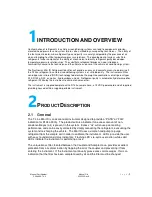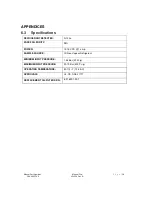
Manual Part Number:
5-06-4900-74-0
Manual File:
023524 Rev. A
P a g e
|
V
General Cautions
•
ALWAYS
wear eye and skin protection when working with refrigerants. Escaping
refrigerant vapors will present a freezing danger.
•
ALWAYS
turn the compressor
OFF
before connecting the instrument to an air
conditioning system.
•
ALWAYS
inspect the sample hose before each use. Replace the hose if it appears
cracked, frayed, obstructed or fouled with oil.
•
DO NOT
direct refrigerant vapors venting from hoses towards the skin.
•
CAUTION
– Do not pressure test or leak test HFC-134a service equipment and/or
vehicle air conditioning systems with compressed air. Some mix-tures of air and HFC-
134a have been shown to be combustible at elevated pressures. These mixtures, if
ignited, may cause injury or property damage. Additional health and safety information
may be obtained from refrigerant manufacturers.
•
DO NOT
disassemble the instrument. There are no serviceable components internal to
the instrument and disassembly will void the warranty.
•
ALWAYS
place the Analyzer on a flat and sturdy surface.
•
To reduce the risk of electrical shock, do not disassemble the instrument; do not use the
instrument in wet or damp areas.
•
AVOID
breathing A/C refrigerant and lubricant vapor or mist. Exposure may irritate eyes, nose
and throat. To remove HFC-134a from the A/C system, use service equipment certified to meet
the requirements of SAE J2788. Additional health and safety information may be obtained from
refrigerant and lubricant manufacturers.
•
DO NOT
utilize any hose assembly other than those supplied with the instrument. The
use of other hose types will introduce errors into the refrigerant analysis and instrument
calibration.
•
ALWAYS
verify that the refrigerant which is tested from the Low Side does not contain
or will not emit heavy loads of oil or liquid.
•
CAUTION
– Should be operated by certified personnel.
•
NEVER
admit any sample into the instrument at pressures in excess of
300 psig
.
•
NEVER
obstruct the air intake, sample exhaust or case ventilation ports of the
instrument during use.
•
WARNING
– This Identifier must not be operated in flammable atmospheres.














